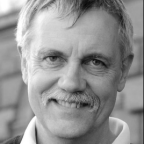Speakers

Sarah-Maria FENDT
VIB KU Leuven Center for Cancer Biology
Visit Fendt's Lab/Company Page
Metabolic rewiring driving metastasis formation
Bio: Sarah-Maria Fendt is a Principal Investigator at the VIB Center for Cancer Biology and full Professor of Oncology at KU Leuven, Belgium. Sarah has a Master of Science degree in Biochemistry from TU Munich and a PhD in Molecular Systems Biology from ETH Zurich. Sarah worked as postdoctoral fellow at the Massachusetts Institute of Technology (MIT), before starting her independent research program in 2013. Sarah’s lab is specifically interested in understanding the role of metabolism in driving metastasis formation and in defining the principles of metabolic regulation that enable cancer cells to communicate with and respond to their environment. Her team applies the powerful technologies of single cell and spatial multi-omics analysis in pre-clinical mouse models and patient samples to study this interplay between cancer cells and their metabolic environment during metastasis formation. The research of Sarah’s lab has been published in high impact journals including Nature and has been funded by multiple (inter)national grants and industry, which include ERC consolidator and proof of concept grants. In 2020 Sarah has been awarded with the highly prestigious EMBO Gold Medal and was elected in 2022 as EMBO member. In 2023 Sarah received the Francqui-Collen prize (most important science prize in Belgium) and the 51st Léopold Griffuel award as well as the 2024 AACR Outstanding Achievement in Basic Cancer Research award.
Talk title: Metabolic rewiring driving metastasis formation
Abstract: Metastasis formation is the leading cause of death in cancer patients. We find that metabolic rewiring is a liability of metastasizing cancer cells. For example, we discovered that extracellular remodeling of the metastatic niche, a process essential to metastasis formation, requires a transcriptional-independent regulation via the metabolites. Moreover, we provide knowledge on intratumor heterogeneity of metabolism and its role in pre-metastatic niche and metastasis formation. Thus, we study the metabolism of metastasizing cancer cells with the goal to define novel therapeutic strategies.
Heidi MCBRIDE
McGill University
Visit McBride's Lab/Company Page
Mapping new pathways of pyroptotic cell death
Bio: Dr. McBride is a Professor at McGill University in the Montreal Neurological Institute. Her work focuses on the molecular mechanisms and function of mitochondrial dynamics. The overarching theme is to understand the fundamental behavior of the mitochondria, including fusion, fission and the generation of mitochondrial derived vesicles (MDVs). The overarching goal is to identify the molecular mechanisms of communication required to mediate cellular transitions, including metabolic, cell cycle, immune pathways and cell death transitions. Recent areas of research interest include mechanisms of mitochondrial contributions to neurodegeneration; the mechanisms of MDV formation and the role of the mitochondria as a unique signaling platform in the cell.
Talk title: Mapping new pathways of pyroptotic cell death
Abstract: Cell death is inhibited in cancers but increased in neurodegeneration, highlighting the importance of its regulation for human health. MAPL is an outer mitochondrial membrane SUMO ligase involved in cell death in both cancer and neurodegeneration in vivo, yet how MAPL controls the fate of this process remains unclear. Combining genome-wide functional genetic screening and cell biological approaches, we found that MAPL induces pyroptosis through an inflammatory pathway involving mitochondria and lysosomes. This discussion will detail the mechanisms by which MAPL and the mitochondria-to-lysosome pathway act at the nexus of immune signalling and cell death.


Jennifer LIPPINCOTT-SCHWARTZ
Howard Hughes Medical Institute, US
Visit Lippincott-Schwartz's Lab/Company Page
Looking under the hood of cells from micron to atomic scales
Bio: Dr. Jennifer Lippincott-Schwartz is a Senior Group Leader at the Howard Hughes Medical Institute’s Janelia Research Campus and Head of the Research Program on 4D Cellular Physiology. Lippincott-Schwartz has pioneered the use of green fluorescent protein technology for quantitative analysis and modelling of intracellular protein traffic and organelle dynamics in live cells. Her innovative techniques to label, image, quantify and model specific live cell protein populations and track their fate have provided vital tools used throughout the research community. Her findings using these techniques have reshaped thinking about the biogenesis, function, targeting, and maintenance of various subcellular organelles and macromolecular complexes and their crosstalk with regulators of the cell cycle, metabolism, aging, and cell fate determination. She is an elected member of the National Academy of Sciences, the National Academy of Medicine, the American Society of Arts and Sciences and the European Molecular Biology Organization. She is also a Fellow of The Biophysical Society, The Royal Microscopical Society and The American Society of Cell Biology. Her awards include the E.B. Wilson Medal of the American Society of Cell Biology, the Newcomb Cleveland Prize of the American Association for the Advancement of Science, the Van Deenen Medal, the Keith Porter Award of the American Society of Cell Biology, the Feodor Lynen Medal, and the Feulgen Prize of the Society of Histochemistry. She co-authored the textbook “Cell Biology” and was President of the American Society of Cell Biology. Dr. Lippincott-Schwartz attended Swarthmore College, received her MS from Stanford University, and obtained her PhD in Biochemistry from Johns Hopkins University.
Talk title: Looking under the hood of cells from micron to atomic scales
Abstract: Powerful new ways to image the internal structures and complex dynamics of cells are revolutionizing cell biology and bio-medical research. In my talk, I will focus on three emerging technologies capable of revealing new properties of cellular organization at scales ranging from nanometer to atomic resolution. Whole cell milling using Focused Ion Beam Electron Microscopy (FIB-SEM) was used to reconstruct the entire cell volume at 4-nm voxel resolution, revealing all membrane-bound organelles and their trafficking intermediates at isotropic resolution. Single particle tracking using Halo dyes revealed unexpected features of mRNA trafficking, including sites where secretory proteins are translated on ER and their regulation by lysosomes. Finally, High Resolution Template Matching (HRTM) of ribosome subunits in cryo-EM images of intact human cells afforded a look at ribosomes at different stages of peptide elongation at the atomic scale. Together, these new tools open-up a plethora of questions related to mechanisms of cell structure/function that can now be studied in intact cells at the nanometric/molecular level.
Lara URBAN
University of Zurich, Institutes for Food Safety and Hygiene and for One Health
Visit Urban's Lab/Company Page
Bio: Lara is a statistical geneticist and ecologist with a PhD in computational genomics from the University of Cambridge and the European Bioinformatics Institute (EMBL-EBI) and independent research experience with the national Department of Conservation as a Humboldt Fellow in New Zealand. Since 2022 Lara has led her own research group, now on the professorship track at the University of Zurich and its Food Safety and One Health Institutes and as invited member of the One Health Advisory Council of the German Federal Ministry for Economic Cooperation and Development, and previously as Helmholtz Principal Investigator at the Helmholtz AI Institute with a faculty position at the Technical University of Munich. Lara was named the Young Scientist of the Year by the German Association of University Professors in 2023.
Talk title: Nanopore technology and AI for rapid pathogen surveillance
Abstract: Genomics has become an integral part of One Health surveillance to identify pathogen and resistance outbreak clusters and transmission routes, and whole-genome sequencing of cultured pathogens is now a recommended standard by the European Centre for Disease Prevention and Control and the European Food Safety Authority. I will show how recent improvements in genomic sequencing by real-time and accessible nanopore sequencing technology now hold the promise of implementing rapid genomic sequencing at the point of care and potentially globally due to the low upfront investment costs. I will explore how rapid and holistic metagenomic surveillance by nanopore sequencing and AI-based analysis can address challenges associated with metagenomics-based surveillance in terms of sensitivity, viability, and associations of resistance genes to their pathogenic hosts.


Laurence ROMY
Biopôle SA & Lormina.ch
Bio: Dr. Laurence Romy is a scientist-turned-strategist with a passion for life sciences innovation. She holds a PhD in Immunology and Cancer from the University of Lausanne, where her research focused on uncovering novel therapeutic targets in B-cell lymphomas. Currently, Laurence serves as Business Intelligence Manager at Biopôle SA, a leading Swiss life sciences campus. In this role, she leads innovation scouting, Scientific evaluations of biotech and medtech startups, and manages key corporate partnerships. She is also the driving force behind the Biopôle Discovery Day, a flagship event showcasing cutting-edge life sciences ventures. Beyond her role at Biopôle, Laurence is the founder of Lormina.ch, a platform dedicated to supporting career transitions for PhDs and early-career researchers through interviews and practical resources. Her work has been featured in Le Temps a Swiss media. A strong advocate for community building, and inclusive innovation, Laurence brings both analytical depth and a people-first mindset to every conversation.
Talk title: Long and short at once, the beauty of the journey: Lessons from a path of doubt, discovery, and courage
Abstract: It was easy to follow a predictable academic path: high school with a scientific focus, then a Bachelor’s, a Master’s, and finally a PhD. But then what? For me, it has always been important to take ownership of my own development and not wait for others to shape my career trajectory. This mindset guided me before, during, and after my PhD research. Throughout this keynote, I hope to share how being proactive and taking pride in every step of both my personal and professional development has shaped my life. My wish is that it will resonate with you and perhaps inspire you to reflect on your own path.
Kristina STAPORNWONGKUL
Institute of Molecular Biotechnology (IMBA)
Visit Stapornwongkul's Lab/Company Page
Parallel Symposia Session I – The Metabolic Code of Life: Energy and Cell Systems
Bio: Kristina Stapornwongkul is an independent research group leader at IMBA (Vienna BioCenter) since September 2025. Her recently established research group uses mouse and human stem cell models to study environmental and metabolic regulators of embryonic development. Kristina received her PhD in Developmental and Stem Cell Biology from the University College London and the Francis Crick institute working on the generation of synthetic morphogenetic gradients to pattern embryonic tissues. During her postdoctoral studies at EMBL Barcelona, she investigated the role of glucose metabolism during cell fate decision making.
Talk title: Glycolytic activity instructs germ layer proportions through regulation of Nodal and Wnt signalling
Abstract: Metabolic pathways can influence cell fate decisions, yet their regulative role during embryonic development remains poorly understood. Here, we demonstrate an instructive role of glycolytic activity in regulating signalling pathways involved in mesoderm and endoderm specification. Using a mESC-based in vitro model for gastrulation, we found that glycolysis inhibition increases ectodermal cell fates at the expense of mesodermal and endodermal lineages. We demonstrate that this relationship is dose-dependent, enabling metabolic control of germ layer proportions through exogenous glucose levels. We further show that glycolysis acts as an upstream regulator of Nodal and Wnt signalling and that its influence on cell fate specification can be decoupled from its effects on growth. Finally, we confirm the generality of our findings using a human gastrulation model. Our work underscores the dependence of signalling pathways on metabolic conditions and provides mechanistic insight into the nutritional regulation of cell fate decision making.


Benjamin SCHUMANN
TUD Dresden University of Technology
Visit Schumann's Lab/Company Page
Parallel Symposia Session I – Advances in Chemical Biology and Drug Discovery
Bio: Ben trained in carbohydrate chemistry with Peter Seeberger at the Max Planck Institute in Potsdam, and in chemical glycobiology with Carolyn Bertozzi at Stanford. Combined with a background in biochemistry, Ben has learnt to use synthetic tools to probe, understand and manipulate glycans particularly in the secretory pathway of mammalian cells. A breakthrough technology in his lab features the use of engineered glycosyltransferases and biosynthetic enzymes to generate “precision tools” for individual enzymes, glycan sub-types and cells. Ben has received multiple awards including the Royal Society of Chemistry (RSC) Chemical Biology Horizon Prize (2021), the Dextra (2023) and Heatley (2024) Awards. He has been awarded a Biochemical Society Early Career Award (2024), is an EMBO Young Investigator and a Fellow of the RSC. Since summer 2025, Ben is a Full Professor of Biochemistry at TUD Dresden University of Technology, advancing the mission to develop chemical Precision Tools for protein glycosylation.
Talk title: Chemical Precision Tools to Dissect Protein Glycosylation
Abstract: Alterations in glycoprotein expression and composition are an undisputed corollary of cancer development. Consequently, some of the most important tumor biomarkers are heavily glycosylated. Understanding cancer-induced glycoproteome changes is paramount but hampered by experimental limitations. For instance, protein O-GalNAc glycosylation is among the most abundant and important cancer-relevant posttranslational modifications. Glycans are primed by the activities of 20 GalNAc transferase (GalNAc-T1…T20) isoenzymes located in the secretory pathway. Since these transferases are interdependent through compensation and competition, traditional methods of molecular cell biology do not address the complexity of glycoprotein biosynthesis. Furthermore, workflows in mass spec-glycoproteome analysis are often restricted to isolated cell lines that do not adequately reflect the interaction between tumor and microenvironment. Thus, we lack strategies to understand 1) the protein substrate specificities of individual GalNAc-Ts and 2) which glycoproteins are made by cancer cells in response to their microenvironment. Here, I describe our development of chemical “Precision Tools” to dissect cellular O-GalNAc glycosylation. We employ bump-and-hole (BH) engineering to render GalNAc-Ts receptive to a chemically modified nucleotide-sugar substrate that carries a bioorthogonal tag and is not used by wildtype transferases. Engineering individual transferases allows differential profiling of their protein substrate specificities. We found that establishing a cellular BH system required an artificial biosynthetic pathway to deliver the corresponding nucleotide-sugar to the secretory pathway. Since such metabolic engineering could be introduced into only one cell line in a co-culture system, we employed the principle to develop a tactic for Bio-Orthogonal Cell-specific TAgging of Glycoproteins (BOCTAG). Thus, chemical Precision Tools allow us to profile O-GalNAc glycosylation as a key player in cancer biology.
Marc-David RUEPP
UK Dementia Research Institute, King’s College London
Visit Ruepp's Lab/Company Page
Bio: Marc-David Ruepp is a Professor of RNA Biology and Molecular Neurodegeneration at the UK Dementia Research Institute (UK DRI) at King’s College London. His laboratory is interested in RNA metabolism in health and disease with a specific focus on neurodegeneration. He received his PhD in 2009 (Graduate School of Cellular and Biomedical Sciences, University of Bern) and started his independent scientific career as Junior Group Leader in 2014 in the Department of Chemistry and Biochemistry at the University of Bern, Switzerland. He habilitated at the Faculty of Science, University of Bern, and received his Venia Docendi in RNA biology in 2018. The same year he joined the UK DRI as Group Leader and King’s College London as Senior Lecturer in Neuroscience. In 2022 he was promoted to Reader and in 2025 to Professor of RNA Biology and Molecular Neurodegeneration.
Talk title: Dissecting the molecular determinants of FUS function
Abstract: Mutations in the gene encoding the RNA-binding protein Fused in Sarcoma (FUS) are linked to an aggressive form of Amyotrophic Lateral Sclerosis (ALS) and typically cause mis-localisation of the mutant protein from the nucleus to the cytoplasm. Evidence from mouse models strongly suggests that FUS causes motor neuron degeneration via a toxic gain-of-function in the cytoplasm, though the molecular underpinnings of this toxicity remain enigmatic. Notably, we lack detailed knowledge of how the ability of FUS to interact with RNA and undergo phase separation influence its functions and contribute to motor neuron degeneration in mammalian systems. In this study, we identified and validated point mutations that robustly and specifically impair either RNA-binding or phase separation of FUS in vitro and subsequently performed a thorough validation and characterisation of these mutants upon endogenous expression in U2OS cells. Using a combination of automated high-content imaging, RNA sequencing and individual nucleotide resolution cross-linking and immunoprecipitation (iCLIP), we uncovered unexpected roles of RNA-binding and phase separation by FUS in the formation of nuclear RNA/protein condensates, the regulation of gene expression, and the cellular response to DNA damage.


Francesca GIORDANO
Institut de Biologie Intégrative de la Cellule (I2BC)/UMR9198
Visit Giordano's Lab/Company Page
Bio: F. Giordano is an Inserm research director leading the “Lipid trafficking and membrane contact sites” team at Institut de Biologie Integrative de la Cellule (I2BC, UMR9198) in Gif-sur-Yvette, France. Francesca Giordano earned her Ph.D. in 2007 at the University of Naples Federico II and pursued post-doctoral training (2008-2011) in Graça Raposo’s laboratory at Institut Curie in Paris, studying the intracellular sorting and function of an intracellular GPCR, OA1, whose encoding gene is mutated in Ocular Albinism type 1. During her second postdoc (2011-2013) in Pietro de Camilli’s lab at Yale University, in US, she developed interest in lipid trafficking and in the emerging field of membrane contact sites. She identified the Extended-Synaptotagmins as the first conserved components of Endoplasmic Reticulum (ER) - plasma membrane contact sites involved in lipid transport. In 2013 she came back to France with an Inserm researcher position and discovered a novel localization and function of proteins of the Oxysterol-binding related protein (ORPs) family at ER-mitochondria contact sites. In 2017, thanks to an ATIP-Avenir program she established her own group at the I2BC, where she continues her research in the area of membrane contact sites. She is also a laureate of the Foundation Schlumberger for the Education and the Research (FSER) and member of the FSER circle. Recent work by her team has highlighted a novel role of ER-mitochondria contact sites in the biogenesis of lipid droplets. Her laboratory, is also studying how lipid transfer and storage are coordinated in the cell and how these processes are altered in neurodegenerative disorders (such as Alzheimer’s).
Talk title: Regulation of lipid transport and storage at the three-way Mitochondria-Endoplasmic Reticulum-Lipid Droplet junction
Abstract: Mitochondria, essential for energy conversion, and lipid droplets (LDs), crucial for energy storage, play key roles in maintaining cellular bioenergetics. To function properly and preserve membrane integrity, these organelles require a constant and regulated lipid exchange with the Endoplasmic Reticulum (ER), the main site for lipid synthesis. These exchanges occur at the level of membrane contact sites (CS), yet how lipids are transferred to these organelles and to LDs during their formation remain largely unknown. We have previously shown that ER Membrane subdomains Associated with Mitochondria (MAMs) are hotspots for LD formation, uncovering a three-way CS connection between mitochondria, ER, and LDs. We hypothesize that MAMs are key metabolic platforms coordinating lipid exchange and communication between the ER, mitochondria, and LDs. To test this, we are investigating the morphology and the functional relevance of these three-way contacts for lipid transfer and storage in the cell using a combination of biochemical and imaging approaches, including Structured Illumination Microscopy (SIM) and 3D Focused Ion Beam-Scanning Electron Microscopy (FIB-SEM). We have identified a novel ER subdomain, often dynamically connected to mitochondria, that invaginates into LDs and remodels in response to metabolic changes, regulating LD growth and turnover. Simultaneously, we have uncovered a novel role for the oxysterol-binding protein-related proteins ORP5 and ORP8 in controlling the transport and metabolism of phosphatidic acid (PA) at the mitochondria-ER-LD interface, thereby influencing mitochondrial dynamics and lipid storage. We are exploring how this process is integrated into broader lipid communication networks, including those occurring at ER-plasma membrane CS.
Jan HUISKEN
Georg-August University Goettingen
Visit Huisken's Lab/Company Page
Bio: Jan Huisken is an Alexander-von-Humboldt Professor at the Georg-August University in Göttingen. Jan studied physics in Göttingen and Heidelberg and has a background in three-dimensional fluorescence microscopy, optical manipulation and trapping, developmental biology, and zebrafish development. He received his PhD from the EMBL Heidelberg, where he pioneered multidimensional light sheet microscopy (also Selective Plane Illumination Microscopy, SPIM) in the labs of Ernst Stelzer and Joachim Wittbrodt. For one of the first applications of light sheet microscopy, Huisken moved to the lab of Didier Stainier at the University of California, San Francisco, as a cross-disciplinary HFSP postdoctoral fellow in 2005 to study cardiovascular morphogenesis and function in zebrafish. From 2010, Huisken was an independent group leader at the Max Planck Institute for Molecular Cell Biology and Genetics in Dresden, Germany. From 2016, he was a principal investigator and director of Medical Engineering at the Morgridge Institute for Research and a Professor at the University of Wisconsin, Madison. Since 2021, he has been an Alexander-von-Humboldt Professor at the Georg-August University in Göttingen. Huisken is best known for his interdisciplinary work at the interface of gentle high-resolution microscopy and quantitative developmental biology. Huisken was awarded the Royal Microscopy Society Medal for Light Microscopy in 2017, the Lennart Nilsson Award in 2020, and the Humboldt-Professorship in 2021.
Talk title: Flamingo: A Portable, Modular Platform for In Vivo Imaging in Diverse Environments
Abstract: Advances in biological imaging have dramatically expanded our ability to explore life at cellular and subcellular scales. However, the reach of cutting-edge microscopy often remains limited to centralized research facilities, creating barriers for investigators studying rare, fragile, or geographically restricted organisms outside the laboratory. In this talk, I will introduce Flamingo—a modular, portable light sheet microscope platform designed to bring high-resolution imaging directly to diverse biological settings.
Flamingo reimagines instrument development with a user-centric, collaborative approach, enabling biologists and engineers to tailor imaging systems to evolving experimental needs. Its plug-and-play modules, open-access framework, and ready-to-use design deliver state-of-the-art performance in both core labs and field environments, while supporting rapid reconfiguration and reproducibility. Crucially, Flamingo empowers users by eliminating the need for specialized instrument-building expertise, lowering barriers to entry for advanced imaging.
I will discuss the scientific motivation, technical innovations, and collaborative model underpinning Flamingo, showcase its application in experiments ranging from live imaging of non-model organisms to remote deployment for ecological and developmental studies, and outline how Flamingo serves as a blueprint for distributed, sustainable research infrastructure. Finally, I will highlight challenges and lessons learned from this multi-year interdisciplinary effort, and invite dialogue on fostering inclusive access to next-generation imaging technologies.


Elisa ORICCHIO
EPF Lausanne
Visit Oricchio's Lab/Company Page
Parallel Symposia Session II – Advancing Cancer Therapeutics Through Patient-Derived Complex Models
Bio: Elisa Oricchio is an associate professor at EPFL, and she is Director of the Swiss Institute for Experimental Cancer Research (ISREC). Her research focuses on cancer genomics and B-cell malignancies. Over the course of her career, she has identified oncogenes or tumor suppressor genes as new therapeutic targets or as biomarkers to better classify cancer patients. She has integrated linear cancer genomic analyses with tridimensional analyses of the genome to better understand tumor development and evolution. Her work has been recognized with the Blavatnik Award for Young Scientist by the New York Academy of Science, the Lorini Award for Italian Scientist in Cancer Research and in 2021 she received the Prix Leenaards for Translation Research. In 2024, Elisa won the 2024 Pezcoller Foundation-EACR Award. She is a board member of the European Association of Cancer Research (EACR), which is the major association for cancer research in Europe.
Talk title: Empower Personalized medicine for cancer patients using tissue explants for drug screening
Abstract: Each tumor is characterized by a unique combination of molecular alterations and interactions with immune and stromal cells. Tumor molecular heterogeneity and plasticity hinder the selection of appropriate therapies for each cancer patient. To address this problem, we developed a platform to maintain small fragments of human lymphoma tissue in culture for several days and use them to test response to small molecules. Using these tissue fragments, that we called lymphomoids, we were able to test sensitivity to several clinically approved drugs in parallel and examine tissue remodeling upon treatment. Moreover, when this information was available, we showed that the effect of the inhibitors observed in lymphomoids is consistent with the patients' response in the clinic. Now we are expanding this concept to other tumor types and use these models in patient that are discussed in the molecular tumor board.
Rudolf AEBERSOLD
ETH Zurich
Visit Aebersold's Lab/Company Page
Parallel Symposia Session II – Proteomics in the Era of Multi-Omics
Bio: Ruedi Aebersold is a Swiss/Canadian scientist trained at the Biocenter, University of Basel, Switzerland. After postdoctoral research at Caltech, he was on the faculties of the University of British Columbia, Vancouver and the University of Washington, Seattle WA. In 2000 he co-founded, with Lee Hood and Alan Aderem, the Institute for Systems Biology in Seattle. In 2004 he joined ETH Zürich to establish the Institute of Molecular Systems Biology. He has co-founded several companies and holds multiple public service appointments. The group’s work was recognized with numerous national and international awards including the Biemann medal of ASMS, the Paracelsus prize of the Swiss Chemical Society, the Otto Naegeli Prize, the Thomson medal of IMSF, the HUPO achievement award, the Marcel Benoist Swiss Science Prize, the most prestigious science award in Switzerland, and the Heineken award for Biochemistry and Biophysics in 2024. Ruedi holds an honorary doctorate from the University of Lund, Sweden. The research focus of the Aebersold group was the proteome. The group pioneered several widely used techniques and generated open access/open-source software and statistical tools that contribute to making proteomic research results more transparent, reproducible and accurate and, when applied, advanced the understanding of molecular processes in basic biology and clinical research. Ruedi Aebersold entered emeritus status in 2021 and now serves as a member of the board of trustees of several foundations that support life science research and charity projects.
Talk title: On the dependency of cellular states on the adaptable modular proteome
Abstract: Biological or clinical phenotypes arise from the biochemical state of a cell or tissue which, in turn, is the result of the composition of biomolecules, their organization and interactions in the cell. The biochemical state is determined, in part, by the genotype and by external conditions the cell senses and adapts to. At present, there is neither a comprehensive theory nor computational models that generally predict the cellular adaptation to changes in the genome or external conditions. There is general consensus that proteins are essential to the understanding of the function and adaptation of biochemical processes. The golden age of biochemistry in mid-20th century established the principles how proteins are synthesized, how they fold and function and how their activities are regulated. The advent of the OMICS age nurtured the notion that aggregate results from the profiling of all genes (genomics) and proteins (proteomics), metabolites (metabolomics) etc. would be suitable to explain the molecular basis of the processes of life. In this presentation we will argue that cellular states are specified by the state of the adaptable modular proteome and that the state of the modular proteome can be measured by multiPROTeomic (the analysis of the proteome at multiple layers) analyses. We therefore foresee that the most impactful proteomic research should focus on the development and routine use of an integrated multi-PROTeomic technology that captures the information of all relevant proteomic layers and on associated computational strategies that translate the aggregated data into a model that predicts the adaptation of the system to genomic or external perturbations.


Jana SEIFERT
University of Hohenheim, Department of Functional Microbiology of Livestock
Visit Seifert's Lab/Company Page
Parallel Symposia Session II – Proteomics in the Era of Multi-Omics
Bio: Jana Seifert studied Geoecology at the Technical University Bergakademie Freiberg, Germany. During her studies she got fascinated about microbiology and decided to move on this subject. She did her PhD in biology about the degradation of chloroaromatic hydrocarbons by gram-positive bacteria. As a Post-Doc she focused on geomicrobiology and analyzing microbial communities with molecular-genetic techniques. As a group leader at the Helmholtz Center for Environmental Research – UFZ in Leipzig, Germany she started to focus on the functionality of microbial communities setting up metaproteomics and protein-SIP. From 2013 to 2018 she was a junior professor, since 2018 she is a full professor at the University of Hohenheim. She is the head of the Functional Microbiology of Livestock group and member of the Hohenheim Center for Livestock Microbiome Research (HoLMiR), where she works on the microbiome-animal interaction and the use of feeding resources by the gut microbiome.
Talk title: Using metaproteomics for livestock microbiome research
Abstract: Microbial communities (microbiomes) are major drivers for digestive processes in the gastrointestinal tract of animals, especially in ruminants. The great variety of microbes and the complexity of microbiomes is known due the recent progress in genome sequencing approaches. Intestinal microbiomes are essential for efficient feed conversion as well as the health of animals. This requires a detailed understanding of microbes on a functional level by identifying cellular functions (metabolism, transport, stress response) which are represented by proteins. Metaproteomic approaches move beyond the genetic potential addressed by metagenomics by highlighting the metabolic and cellular pathways that are expressed by the microbiome. Together with metabolomic analyses, metaproteomics can lead to an improved holistic picture of the active microbiome. Examples will be given where we used those combined approaches to study the influence of different feeding strategies on the entire GIT microbiome of dairy cows. Stable isotope labelling approaches (13C) are used to identify main carbon utilizers in the chicken gut.
Hauke HILLEN
University Medical Center Goettingen
Visit Hillen's Lab/Company Page
Parallel Symposia Session III – Mitochondria: Fueling Cells in Life, Death, and Disease
Bio:
2007-2013 Studies of Biochemistry, University of Tübingen, Germany
2012 Research stay with Jennifer Doudna, PhD, University of California, USA
2013-2017 PhD in Biochemistry (Structural Biology), Ludwigs-Maximilians-University Munich, Germany
2018-2020 Project Leader, Max Planck Institute for Biophysical Chemistry, Göttingen, Germany
Since 2020 Professor for Protein Biochemistry, University Medical Center Göttingen and Group Leader at the Max Planck Institute for Multidisciplinary Sciences Göttingen, Germany.
Talk title: Molecular basis of mitochondrial RNA metabolism
Abstract: The mitochondrial genome (mtDNA) encodes for essential subunits of the respiratory chain and its faithful and coordinated expression is a prerequisite for eukaryotic life. Unsurprisingly, dysfunctions in mitochondrial gene expression are associated with severe human diseases. Mitochondrial gene expression is carried out by unique molecular machineries, which fundamentally differ from those involved in nuclear or bacterial gene expression. However, the molecular mechanisms underlying mitochondrial gene expression remain comparably poorly understood. Our group studies the molecular basis of mitochondrial gene expression using a combination of biochemical, biophysical and structural biology methods. This has enabled us to elucidate the mechanisms of transcription (Hillen et al., Cell 2017a,b; Bonekamp et al., Nature 2020) and RNA processing (Bhatta et al., NSMB 2021; Bhatta et al., NSMB 2025) in human mitochondria. In my talk, will provide an overview of our work and highlight recent advances in our understanding of human mitochondrial RNA metabolism.


Marc BUSCHE
DBM, University of Basel
Visit Busche's Lab/Company Page
Bio: Marc Aurel Busche is Professor of Dementia and Neurodegeneration at the University of Basel, where he directs the Memory Clinic and Old Age Psychiatry at the University Hospital of Geriatric Medicine FELIX PLATTER and leads the "Brain Ageing and Neurodegeneration" research group at the Department of Biomedicine. He concurrently holds a position as Programme Leader at the UK Dementia Research Institute, University College London. Until 2025, he also served as an honorary consultant psychiatrist at the Cognitive Disorders Clinic, Queen Square National Hospital for Neurology and Neurosurgery, London. Professor Busche’s research aims to uncover cellular and neural-circuit mechanisms underlying Alzheimer’s disease (AD) and related disorders, translating these insights into early biomarkers and more effective therapies. His pioneering work has advanced understanding of neuronal circuit dysfunction in AD, including the discovery of neuronal hyperactivity near amyloid plaques and the previously unrecognised role of oligodendrocytes as key producers of amyloid-beta driving early disease progression. Using advanced in vivo imaging and high-density electrophysiology in disease models, his lab recently identified novel cellular mechanisms linking tau pathology to cognitive impairment, as well as specific neuronal populations and circuits that become dysfunctional at very early disease stages. Professor Busche studied medicine at Ludwig Maximilians University of Munich, completed his doctoral training (MD, PhD) and psychiatry residency at the Technical University of Munich, and conducted postdoctoral research at Harvard Medical School. His contributions to dementia research have been internationally recognised with numerous awards, including a prestigious UKRI Future Leaders Fellowship.
Talk title: Selective vulnerability of neural circuits in early Alzheimer’s Disease
Abstract: Alzheimer’s disease develops over many years before clinical symptoms appear, yet early pathological changes already disrupt specific neuronal populations and circuits. Evidence indicates that certain cell types and microcircuits are particularly vulnerable to the accumulating effects of amyloid-beta and tau, the key pathological hallmarks of the disease. In this talk, I will present our recent work mapping how these proteins change neuronal activity patterns, synaptic receptor composition, and circuit dynamics during the earliest stages of disease progression. I will outline emerging principles that explain why some cell classes and connections are especially vulnerable, and how these early disruptions contribute to the transition from molecular pathology to systems-level dysfunction. Together, these findings provide a mechanistic framework for understanding selective vulnerability in Alzheimer’s disease and identify potential avenues for early therapeutic intervention.
Britta ENGELHARDT
Theodor Kocher Institute, University of Bern
Visit Engelhardt's Lab/Company Page
Bio: Britta Engelhardt is Professor for Immunobiology and Director of the Theodor Kocher Institute at the University of Bern in Switzerland. Using advanced in vitro and in vivo live cell imaging approaches her work has significantly contributed to understanding the role of the brain barriers in maintaining central nervous system (CNS) immune privilege. Her over 300 publications are highly cited. Her recent honors include the Malpighi Award of the European Society for Microcirculation in 2023, the Keynote Lecture Award from the Journal of Comparative Pathology Education Trust ESVP/ECVP and the Camillo Golgi Lecture from the European Academy of Neurology in 2024 and the Swiss MS Society Research Price in 2025. She is the Vice-President/President Elect of the International Brain Barriers Society.
Talk title: How brain barriers ensure CNS homeostasis and immune privilege
Abstract: The central nervous system (CNS) has a unique relationship with the immune system called CNS immune privilege. CNS immune surveillance is precisely regulated by a compartmentalization of the CNS etablished by distinct anatomical barriers. These include the blood–brain barrier (BBB), blood–cerebrospinal fluid barrier (BCSFB), the artachnoid barrier and the glia limitans, which together form a dynamic interface allowing immune surveillance while protecting the brain parenchyma. The presentation will illustrate how immune cells, particularly activated T cells, access perivascular and meningeal spaces without disrupting the CNS parenchyma and how T cells breach the glia limitans leading to neuroinflammation. Our findings refine the understanding of CNS immune privilege and open new avenues for targeted therapies and biomarker discovery in neurological disorders.


Emma HODCROFT
Swiss TPH & University of Basel
Visit Hodcroft's Lab/Company Page
Parallel Symposia Session III – Bioinformatics Driving the One Health Concept
Bio: Dr Emma Hodcroft began working in molecular epidemiology, phylogenetics, and modelling in HIV at the University of Edinburgh, where she investigated the heritability of viral load and developed an agent-based model simulating HIV phylogenies during her MSc, PhD, and a post-doc. In 2017, she moved to Basel as a post-doc and joined the Nextstrain project, becoming a co-developer of the project. Prior to the pandemic, Dr Hodcroft worked on projects with tuberculosis, campylobacter, influenza, and RSV, but primarily studied Enterovirus D68, where she has formulated new hypotheses about its evolution and transmission patterns. From February 2020, Dr Hodcroft worked full-time on SARS-CoV-2, including identifying a key variant that dominated Europe in the summer of 2020 despite not being more transmissible (EU1). This work led her to develop the first variant-tracking website, CoVariants.org. Her work also focused on better combining modelling & phylogenetics and the post-pandemic-restriction re-emergence of other respiratory viruses. Dr Hodcroft was additionally very active in science communication during the pandemic, and was featured regularly in the media. Thanks to a successful Swiss National Science Foundation Starting Grant application, Dr Hodcroft started her own lab at the Swiss Tropical and Public Health Institute in November 2023, where she’s switching back to her pre-pandemic work on endemic respiratory viruses. In August 2024, she co-founded Pathoplexus.org, an open-source database to encourage and enable viral genome data sharing while protecting and better crediting data generators. In December 2024, she was recognised as one of Nature’s ‘Ones to Watch’ in 2025.
Talk title: Pathoplexus: building a new kind of pathogen database
Abstract: Sharing viral genomic data is critical for scientific research and informing public health responses. Although, platforms like the International Nucleotide Sequence Database Collaboration (INSDC: NCBI, ENA, DDBOJ) and GISAID facilitate data sharing, they do not fully address specific needs of the pathogen genomics community. Persistent concerns about data misuse, “scooping,” and limitations on data reuse from protected repositories highlight the need for more flexible and equitable data-sharing.Pathoplexus is a specialized, community-driven viral genomics database designed to balance data utility with autonomy. It combines open-source technologies with transparent governance, allowing data submitters to control how their data is used for up to one year if desired, while promoting rapid data access to researchers and public health officials. All Pathoplexus submissions are automatically uploaded to INSDC: either immediately if fully open or after one year if initially shared as “restricted-use.” Features like SeqSets, which provide citable DOIs to contributors, ensure submitters receive appropriate credit while supporting open, flexible data-sharing terms. Pathoplexus leverages on Loculus, an open-source tool for managing viral sequence databases which can be replicated by laboratories or organizations in setting up their own databases. The platform’s web interface and API ensure accessibility for both interactive and programmable analyses. Pathoplexus is a non-profit association governed by an international Executive Board and includes members from 14 countries across 5 continents, reflecting a commitment to equity and diverse public health needs.Though Pathoplexus launched only recently, it has already made an impact in the pathogen sharing community, and as of Nov 2025, contains over 8,900 directly-submitted sequences. Pathoplexus hosts the first available Sudan ebolavirus sequence collected during the February 2025 outbreak in Uganda, and from the Zaire ebolavirus outbreak in September in DRC. In addition, more mpox sequences have been uploaded to Pathoplexus in 2025 than any other database. We aim to actively expand the number of supported pathogens through community feedback and engagement. In parallel, Pathoplexus is working to broaden support to include raw read data, enhancing viral evolution insights, and implement a federated network of nodes to foster decentralized sequence sharing. This will empower regions to maintain data ownership while contributing to a resilient, global system.In this talk, I introduce Pathoplexus and highlight its potential to enhance data sharing through collaboration and transparency for long-term public health impact.
Philippe MENASCHE
Department of Cardiovascular Surgery, Hôpital Européen Georges Pompidou, Paris, France
Visit Menasche's Lab/Company Page
Parallel Symposia Session III – Extracellular vesicles in Cardiovascular Therapeutics
Bio: Dr Philippe Menasché is a cardiac surgeon at the Hôpital Européen Georges Pompidou, Professor of Thoracic and Cardiovascular Surgery at the University of Paris-Cité and responsible for an INSERM research team (UMR 970-Paris Cardiovascular Research Center). The group has a long-standing interest in basic and clinical research on stem cells for the treatment of heart failure. After the successful completion of a phase I trial testing cardiac progenitors derived from human embryonic stem cells (ESC) embedded in a patch, the recognition of the predominant role of paracrine signalling has led to shift towards an a-cellular cell therapy based on the exclusive use of the extracellular vesicle-enriched secretome of a similar cell type to further streamline the clinical translatability of this myocardial repair strategy. A clinical trial testing this approach is underway.
Talk title: Extracellular vesicles for the treatment of heart failure: a translational experience
Abstract: Over the past years, it has been progressively recognized that the major mechanism of action of transplanted cells was a paracrine signaling whereby the blend of biomolecules secreted by the cells and largely clustered in extracellular vesicles (EV) harness endogenous repair pathways. For a given level of functional equivalence with their parental cells, EV feature clinically appealing advantages, including a pharma-like manufacturing process more akin to that of a drug, a minimal loss of bioactivity after cryopreservation compatible with an off-the-shelf availability and, importantly, the lack of immunogenicity compared with their parental cells. However, several translational issues still need to be addressed which will be discussed. They primarily include (1) the choice of the optimal parental cells; (2) the extent of purification of the conditioned medium; and (3) the optimization of delivery strategies which depends on the clinical setting but increasingly tends to privilege the intravenous route with the underlying assumption that EV trapped peripherally could reprogram the endogenous immune cells towards a reparative pattern, thereby making them the conveyors of the EV protective signals as they traffic to the target organ through the bloodstream. A clinical trial entailing repeated intravenous infusions of the EV-enriched secretome derived from cardiovascular progenitor cells in patients with non ischemic dilated cardiomyopathy has now started in our department and will provide the opportunity to report how we have tried to address the above mentioned issues to make this secretome a clinical-grade therapeutic product.


Omaya DUDIN
University of Geneva
Visit Dudin's Lab/Company Page
Friedrich Miescher 2026 Award Lecture
Find out more about FMA and Omaya HERE
Talk title: Exploring multicellular developmental diversity at the root of animals & beyond
Abstract: All animals develop from a single-celled zygote and undergo complex morphogenetic processes to form multicellular organisms. These processes are regulated by intrinsic and extrinsic factors that drive key developmental events, such as symmetry breaking, cell division, and differentiation. Despite the remarkable conservation of these pathways across species, the evolutionary origins of these morphogenetic mechanisms remain unclear. A major challenge in addressing this question is the limited availability of microscopy and cell biological data from key protists that occupy pivotal phylogenetic positions in the eukaryotic tree, including those identified as the closest unicellular relatives of animals.In this talk, I will show how close animal relatives such as Ichthyosporeans display strikingly diverse developmental strategies, from coenocytic growth with cellularization to cleavage-based colony formation. These systems provide unique opportunities to probe how cells coordinate in space, establish polarity, and differentiate, posing critical questions about the evolutionary transition to multicellularity. Finally, I will outline how we aim to move beyond animal origins by implementing, optimizing, and developing Expansion Microscopy (ExM) to study a broader diversity of microbial eukaryotes. This approach allows us to uncover the diversity of cellular forms, cytoskeletal architectures, and life cycles across lineages, providing new perspectives on how distinct multicellular developmental programs emerge. Our long-term goal is to establish an Expansion Microscopy Atlas of Microbial Eukaryotes, creating a framework to identify general principles of multicellular transitions across eukaryotic life.

